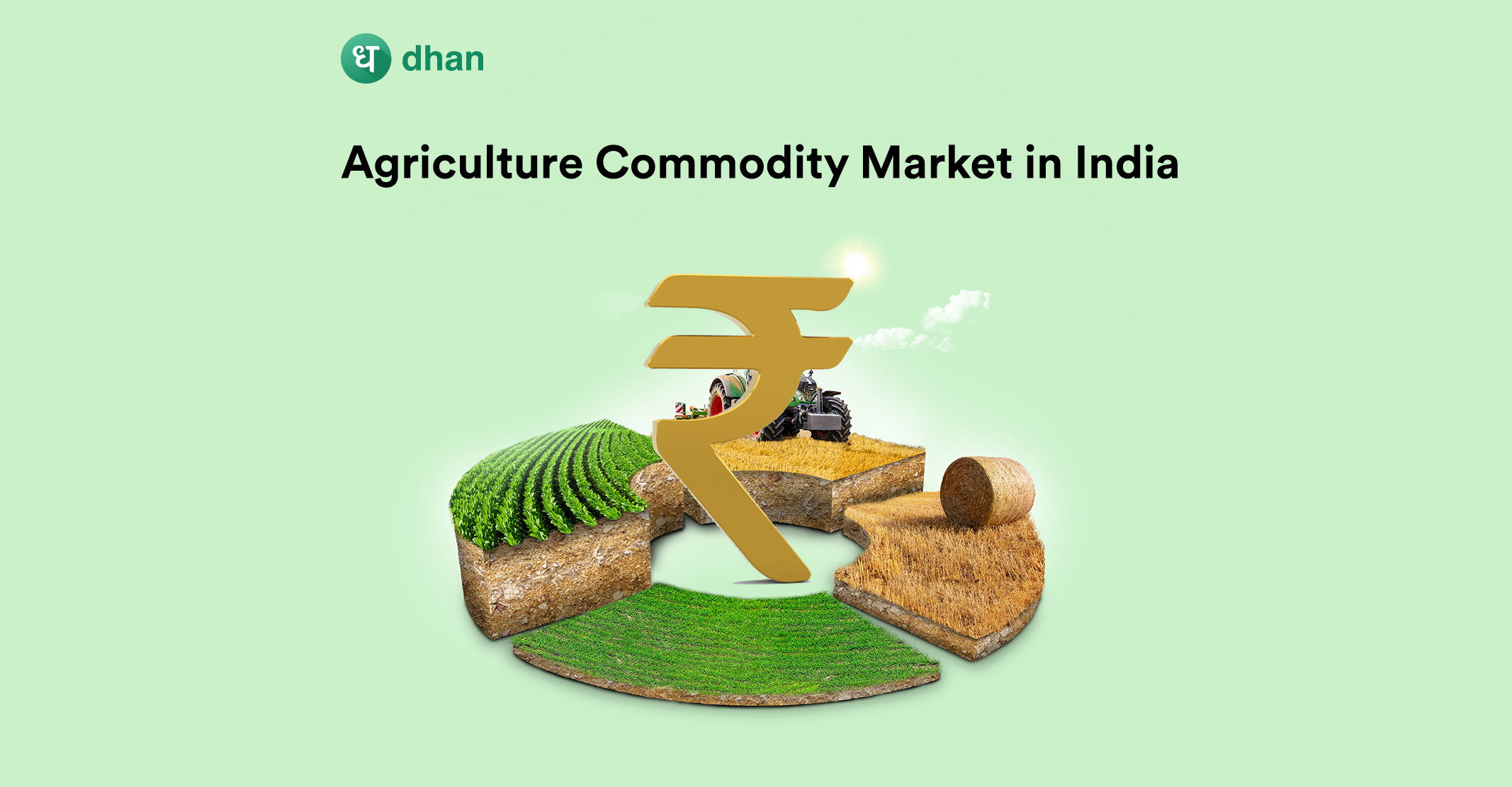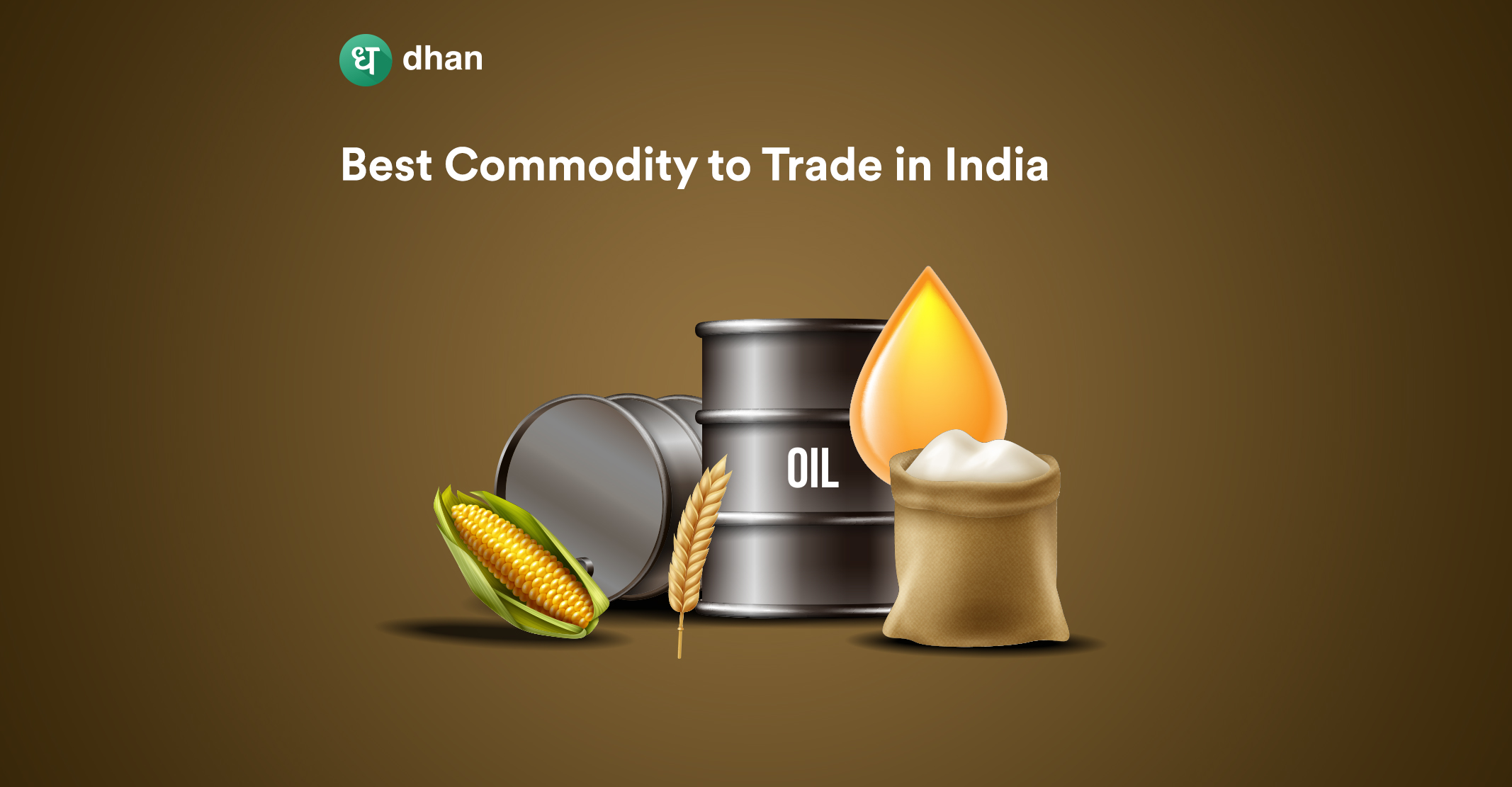The Indian economy is highly reliant on agriculture. The farm produce helps feed the nation and various commodities are often exported. That’s why the agriculture commodity market in India is so important.
Add to the fact that you as a retail trader can also participate in the agri commodity market via online commodity trading and exchange-traded derivatives, understanding this market becomes all the more interesting.
What is the Agriculture Commodity Market?
The agriculture commodity market in India is a key part of the country’s economy. It is a diverse marketplace where farm products like grains, spices, fruits, and vegetables are bought and sold.
These products contribute heavily to the economy, standing at 18.3% of the total economy in 2022-23. That’s not all. Agri exports make up close to 40% of India’s total exports.
Key Participants in the Agriculture Commodity Market
Commodities markets all over the world, not just in India, welcome a diverse bunch of participants, ranging from farmers to institutions and corporations. Each participant has a different goal.
But broadly, these goals can be split into two categories:
- Hedging
- Speculation
You as a retail trader can also participate in this market via commodity futures and options, either to hedge your portfolio against risks or to speculate and generate profits.
Apart from the participants, there are exchanges, depositories, clearing houses, and regulatory bodies.
That said, the agri commodity market can prove to be a fragmented domain that requires care, nurture, and regulation. That’s why the commodity market, exchange-traded derivatives, and commodity exchanges themselves are pivotal.
Role of Commodity Exchanges in Agri Derivatives
While the term agri commodity market may sound like a whole, the parts are quite dispersed and fragmented. Due to this very problem, farmers and other participants would face several problems in the past.
Crops would go to waste, Over-The-Counter (OTC) contracts would go worthless with unfulfilled promises, and liquidity issues would lead to a severe financial crunch. Commodity exchanges exist to fix these problems, slowly and steadily.
First off, commodity exchanges like MCX are organized with strict structures, rules, and regulations. For example, MCX trading holidays and timings as well as risk management principles are in place to ensure transparency.
This means that participants don’t have to worry about problems like broken promises, illiquidity, and others.
Furthermore, holding physical commodities for the sake of speculation can prove to be a hurdle to the nation and its finances.
Let’s say someone likes to buy kilos upon kilos of silver from the spot market purely to earn a profit, not to make jewelry or other baubles. This demand is satisfied through silver imports which are paid for by utilizing forex reserves.
Instead, the person can simply buy silver futures on MCX to speculate. Thus, MCX, NCDEX, and others play a vital role in the Indian agri commodity market for organizing, liquidity, and taking pressure off the spot market.
Major Agricultural Commodities Traded in India
If you look into the bustling list of agricultural commodities traded in India, you’ll find a diverse array of major commodities being bought and sold. The agricultural commodity trading in India encompasses 29 key agri products.
Here is the table summarizing major commodities traded on NCDEX and MCX.
| Agri Product | Exchange |
| Pepper | MCX |
| Chilli | NCDEX |
| Jeera | NCDEX |
| Turmeric | NCDEX |
| Coriander | NCDEX |
| Cereals | Exchange |
| Wheat | NCDEX |
| Barley | NCDEX |
| Maize | NCDEX |
| Pulses | Exchange |
| Chana | NCDEX |
| Masoor | NCDEX |
| Yellow Peas | NCDEX |
| Others | Exchange |
| Guar Seeds | NCDEX |
| Mentha Oil | MCX |
| Guar Gum | NCDEX |
| CER | NCDEX |
| Gur | NCDEX |
| Almonds | NCDEX |
| Oil and Oil Seeds | Exchange |
| Castor Seeds | NCDEX |
| Sesame Seeds | NCDEX |
| Cotton Seed Oil Cake | MCX |
| Soy Bean | NCDEX |
| Mustard Seeds | NCDEX |
| Refined Soy Oil | NCDEX |
| Crude Palm Oil | MCX |
| RBD Palmolein | NCDEX |
| Ground Nut in shell | NCDEX |
Advantages of Trading in Agricultural Commodities
Agricultural commodity trading in India has a rich history dating back centuries, primarily driven by agricultural commodities. Today, it is facilitated through prominent exchanges such as the MCX, NCDEX, and others offering a platform for transparent and regulated trading of futures and options.
Here are some advantages of trading in agricultural commodities in India.
1. Diversification
Trading in agricultural commodities allows you to diversify your portfolio beyond traditional assets like mutual funds, stocks, and bonds, thereby reducing overall risk and enhancing potential returns.
2. Hedge Against Inflation
Agricultural commodities have historically shown a strong positive correlation with inflation, making them a valuable hedge against rising prices. Stocks, on the other hand, are known to falter due to the effects of inflation.
3. Global Demand
Agricultural commodity markets offer exposure to the global market. With international demand for food and agricultural products, you can take advantage of market trends and capitalize on opportunities arising from global trade dynamics.
4. Leverage Volatility
Trading in agricultural commodities offers the advantage of leveraging volatility. Fluctuations in commodity prices create opportunities for you to make a profit by taking advantage of price movements, whether it’s during periods of upward momentum or downward trends.
Factors Influencing the Agriculture Commodity Market
Various factors can affect trading dynamics and outcomes in the agriculture commodity market. As a market player, you must understand how these factors affect prices, supply, and demand.
1. Government Policies and Regulations
Government policies play a crucial role in shaping the agriculture commodity market. Subsidies, trade restrictions, import/export regulations, and agricultural support programs can all impact market conditions.
Stay informed about government interventions and policy changes, as they can affect the profitability and competitiveness of different agricultural commodities.
2. Climate and Weather Conditions
As an agricultural market trader, you must understand how climate and weather affect commodity pricing. Droughts, floods, pests, and other meteorological phenomena can hinder crop production, affecting supply and prices. To anticipate market swings, monitor weather forecasts and seasonal patterns.
3. International Market Trends
The agriculture commodity market is not confined to national boundaries; it is interconnected with global markets. International factors such as changes in demand, trade agreements, geopolitical events, and currency exchange rates can impact commodity prices in India.
In fact, the MCX market time for internationally referenced agri commodities is different from regular agri commodities.
Monitor global trends and market dynamics to identify potential opportunities and risks.
4. Technological Advancements in Agriculture
Technological advancements have revolutionized the agriculture sector, influencing the commodity market as well. Innovations in farming techniques, irrigation systems, machinery, and genetic engineering can increase crop yields, improve quality, and impact market dynamics.
Stay updated on technological developments to leverage opportunities and stay competitive.
Apart from this, the agri commodity market faces a few challenges such as price volatility, inadequate storage infrastructure, limited market transparency, and meeting global demand. As you engage in commodity trading within the agriculture commodity market in India, it is crucial to exercise caution and remain vigilant.
To make informed decisions and minimize commodities trading risks, you should monitor market trends, and price variations, and keep yourself updated with the latest news.
Conclusion
The agriculture commodity market in India presents immense opportunities for farmers, traders, and the overall economy.
With the government’s support and various initiatives such as minimum support prices, futures trading, and export promotion, the market has the potential to thrive.
However, challenges like price volatility and infrastructure gaps can be a hurdle. As technology and sustainable practices continue to shape the sector, embracing innovation and value addition will be crucial to the evolution of the agri commodity market.
Like this? Then you’ll love these blogs:



